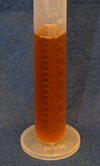The wet sump
 When it comes to any form of competition engine, I prefer my oil systems to be like my Martinis - dry. But as 99% or more of the engines in the world store their oil immediately below the crankcase, it will come as no surprise that some race regulations insist that this arrangement must be retained. And apart from having to mount the engine a little higher in the chassis and the ever-present issue of oil surge on corners and under braking/acceleration, other problems, sometimes totally unseen, could arise. Let me explain.
When it comes to any form of competition engine, I prefer my oil systems to be like my Martinis - dry. But as 99% or more of the engines in the world store their oil immediately below the crankcase, it will come as no surprise that some race regulations insist that this arrangement must be retained. And apart from having to mount the engine a little higher in the chassis and the ever-present issue of oil surge on corners and under braking/acceleration, other problems, sometimes totally unseen, could arise. Let me explain.
When circulating around an engine, the lubricating oil is subject to temperature and pressure fluctuations, which alongside the shearing action of the rotating and reciprocating components can introduce a gaseous element into the body of the oil, in the form of small bubbles. These can consist of products of combustion, air or even components of the lube oil that have 'boiled off' in the bearings and come out of solution.
Whatever they might be, the net effect will, surprisingly, be to increase the viscosity of the oil. While this is theoretically good for the valvetrain the presence of this gas can have serious consequences for the rest of the engine - cavitation in the oil pump and bearings, for instance, or inconsistent operation of any hydraulic elements such as cam phasers, switching elements or hydraulic tappets. Consequently, as an engineer I prefer to have my lubricant as 100% 'solid' oil or as close to it as possible.
In a dry-sump engine much of this can be centrifuged out at some stage, but in a wet sump the opportunities to separate gas and oil are far fewer. Often it is simply the case of 'out of sight, out of mind' and since in a wet sump you can't see the oil level you would naturally assume that everything is OK. In a dry-sump system you will immediately know if all is not well when the oil level rises in the tank. But in a wet-sump engine such luxuries are not available, so the only way is to sample the oil itself. Taking a 100 ml sample of the oil-air mixture from a tapping in the gallery at the back of the cylinder head, diverting it into a measuring cylinder and observing the final oil level as the air gradually rises to the surface, you might be very surprised!
To alleviate the problem you have one of two choices. First, you can increase the time it takes for the oil to drain back to sump, allowing time for the air bubbles to coalesce and come out of solution. A gently sloping shelf underneath the crankcase leading to a deep 'well' where the oil can be picked up by the pump again will help here. Or second, you can increase the volume of oil in the sump by making the sump bigger. In a way, the latter amounts to much the same thing and allows time for the air to come out of solution. But whichever way you choose, with the wet sump you still have the problem of oil surge and a slightly higher engine, neither of which is desirable for racing.
Air in the oil of a wet sump engine may be something you don't ordinarily think about but just because you don't see it doesn't mean it isn't there.
Fig. 1 - Measuring the air content of engine oil
Written by John Coxon